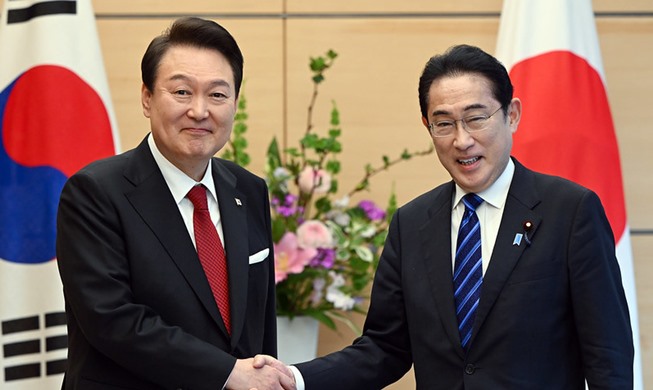-
 Korea.net's 24-hour YouTube channel
Korea.net's 24-hour YouTube channel- NEWS FOCUS
- ABOUT KOREA
- EVENTS
- RESOURCES
- GOVERNMENT
- ABOUT US
View this article in another language
- 한국어
- English
- 日本語
- 中文
- العربية
- Español
- Français
- Deutsch
- Pусский
- Tiếng Việt
- Indonesian
When taekwondo master Wongeon Yang decided to make Costa Rica his new home, the country wasn't a very common destination for Korean immigrants. Today, approximately 450 former Korean citizens have decided to share their destiny with Master Yang, making up around 0.01 percent of our population. However, don't let that fool you. This community is growing stronger with the establishment of an association, two Korean Protestant churches and even a special mass held in Korean at one of the principal Catholic churches in the country.
Even though the Korean community is small in number, its influence is clearly felt. Diplomacy, economics and the "massification" of Korean culture is developing quickly and strongly. In 2012, Korea and Costa Rica celebrated their 50th anniversary of diplomatic ties, both being strategic partners in each other’s development process.
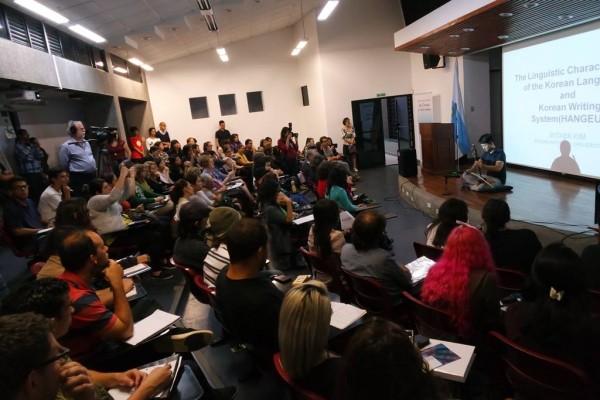
Nature is very important to Koreans, and that is what makes Costa Rica a very famous tourist destination for Koreans, too. Also, this interest has been widely manifested with the opening in 2008 of the Korea-Costa Rica Biodiversity Investigation Center, which has since made many important discoveries.
Since 2011, Costa Ricans have had a formal opportunity to learn the Korean language. At three of the five public universities, curricular language lessons are open for all students. The Sejong Institute has offices in the province of Alajuela, and the Chair of Korean and East Asian Studies -- financed by the Academy of Korean Studies and the Korea Foundation -- is located in San Jose, the capital. At these institutions, Costa Rican youth can learn about the society, history and arts of Korea.
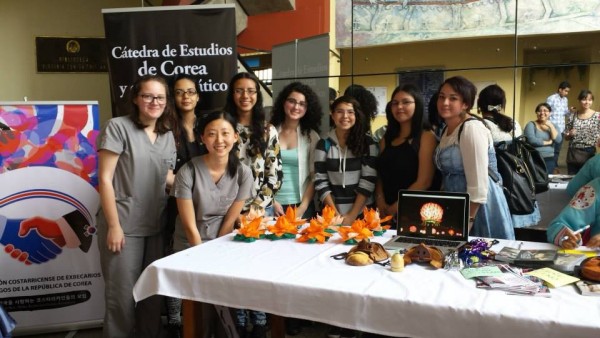
The small but strong community of Korean pop fans has grown little by little. They usually arrange meetings through social media, or meet at one of the seven Korean restaurants in San Jose. During big K-pop geek events, Korean society has its place. There are fan merchandising shops, and dance and singing performances are part of the gatherings.
K-pop lovers recently had the opportunity to see two artists on stage: Lunafly and Park Jung-Min. Korean movies are shown once or twice per year at the biggest independent film theater in San Jose, and there is a series of Korean Film Festivals organized by the Embassy of Korea in Costa Rica. Korean soap operas are becoming a constant on Costa Rican TV. Usually broadcast on a state channel, now Teletica, one of the biggest domestic broadcasters, plays Korean soap operas as part of its usual schedule.
Dance groups and singers have grown in number, too. The K-pop World Festival is a big event here, with the participation of more than 15 groups and 10 singers. Their passion for modern Korean pop has led them cultivate their talents, inspiring them to take classes with national and international instructors, excelling in their performances. Costa Rican singer Johnny Howell qualified for and won third place at the K-pop World Festival 2013, and Tatiana Sánchez, another singer, was a finalist in the K-pop Latin America 2014 festival.
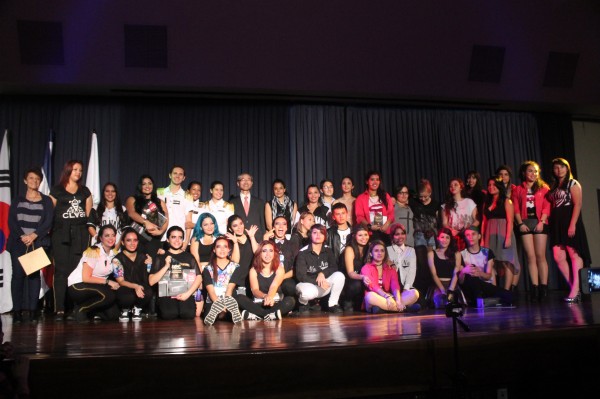
Fans of traditional Korean arts have their share of festivals, too. The Cheongbae Troupe and the Academy of Korean Music brought samulnori music to the stages of theatres and parks across the country. Master Lee Chul-Jin with his show “Three Colors of Korea” and another company with its show “Suryeo” enchanted Costa Ricans with Korean dances, like the salpuri, the taepyeongmu and the seungmu.
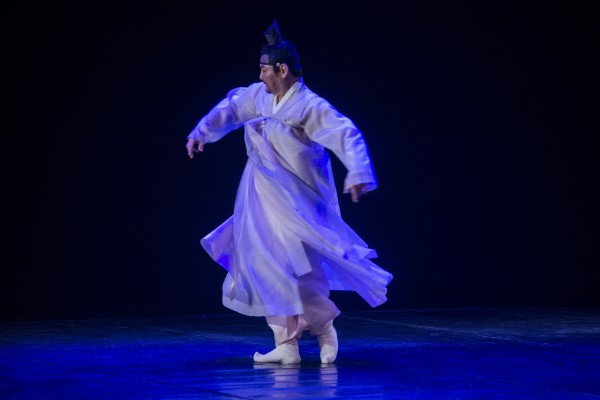
In Costa Rica, both the Korean community and the fans of Korean pop and Korean tradition alike aren't that numerous. Nevertheless, both countries, through cultural, academic, and commercial ties, keep alive a strong mutual relationship. Maybe the friendship between Costa Rica and Korea is not one of the biggest, but it may be one of the most passionate. This friendship grows with time and enamors more and more people. The Korean Wave here is still calm, but Costa Rica's coasts promise to be firm ground when the tide rises.
By Daniela Murillo
Korea.net Honorary Reporter
Photos: Daniela Murillo
Even though the Korean community is small in number, its influence is clearly felt. Diplomacy, economics and the "massification" of Korean culture is developing quickly and strongly. In 2012, Korea and Costa Rica celebrated their 50th anniversary of diplomatic ties, both being strategic partners in each other’s development process.

Jo Jaehyun performs with a traditional two-stringed haegum during an introduction conference on Korean linguistics.
Nature is very important to Koreans, and that is what makes Costa Rica a very famous tourist destination for Koreans, too. Also, this interest has been widely manifested with the opening in 2008 of the Korea-Costa Rica Biodiversity Investigation Center, which has since made many important discoveries.
Since 2011, Costa Ricans have had a formal opportunity to learn the Korean language. At three of the five public universities, curricular language lessons are open for all students. The Sejong Institute has offices in the province of Alajuela, and the Chair of Korean and East Asian Studies -- financed by the Academy of Korean Studies and the Korea Foundation -- is located in San Jose, the capital. At these institutions, Costa Rican youth can learn about the society, history and arts of Korea.

A lotus flower workshop is part of the Asia Festival at the University of Costa Rica.
The small but strong community of Korean pop fans has grown little by little. They usually arrange meetings through social media, or meet at one of the seven Korean restaurants in San Jose. During big K-pop geek events, Korean society has its place. There are fan merchandising shops, and dance and singing performances are part of the gatherings.
K-pop lovers recently had the opportunity to see two artists on stage: Lunafly and Park Jung-Min. Korean movies are shown once or twice per year at the biggest independent film theater in San Jose, and there is a series of Korean Film Festivals organized by the Embassy of Korea in Costa Rica. Korean soap operas are becoming a constant on Costa Rican TV. Usually broadcast on a state channel, now Teletica, one of the biggest domestic broadcasters, plays Korean soap operas as part of its usual schedule.
Dance groups and singers have grown in number, too. The K-pop World Festival is a big event here, with the participation of more than 15 groups and 10 singers. Their passion for modern Korean pop has led them cultivate their talents, inspiring them to take classes with national and international instructors, excelling in their performances. Costa Rican singer Johnny Howell qualified for and won third place at the K-pop World Festival 2013, and Tatiana Sánchez, another singer, was a finalist in the K-pop Latin America 2014 festival.

Participants pose for a photo during the second round of the Costa Rican edition of the K-pop World Festival 2015.
Fans of traditional Korean arts have their share of festivals, too. The Cheongbae Troupe and the Academy of Korean Music brought samulnori music to the stages of theatres and parks across the country. Master Lee Chul-Jin with his show “Three Colors of Korea” and another company with its show “Suryeo” enchanted Costa Ricans with Korean dances, like the salpuri, the taepyeongmu and the seungmu.

Lee Chul-Jin dances a taepyeongmu during the 'Three Colors of Korea' show.
In Costa Rica, both the Korean community and the fans of Korean pop and Korean tradition alike aren't that numerous. Nevertheless, both countries, through cultural, academic, and commercial ties, keep alive a strong mutual relationship. Maybe the friendship between Costa Rica and Korea is not one of the biggest, but it may be one of the most passionate. This friendship grows with time and enamors more and more people. The Korean Wave here is still calm, but Costa Rica's coasts promise to be firm ground when the tide rises.
By Daniela Murillo
Korea.net Honorary Reporter
Photos: Daniela Murillo
Most popular
- China warmly welcomes first Korea-born giant panda Fu Bao
- First hearing-impaired K-pop act hopes for 'barrier-free world'
- Novelist Hwang's 'Mater 2-10' shortlisted for Int'l Booker Prize
- Expats could account for 7% of population in 20 years: report
- Nat'l Fire Agency picks 137 elite staff for deployment abroad









